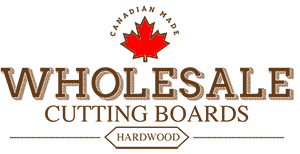Blog
Pyrography Cutting Boards: Mixing Functionality with Art
Pyrography, or woodburning, grew in such popularity that it soon found its place into everyday items, such as embellishing cutting boards. It would be possible to use a pyrography cutting board not only for its traditional purpose in the kitchen but also as an art piece. From intricate designs to personalized engravings, pyrography provides a unique way to mix creativity with practicality. In this article, we will see how pyrography is changing the ordinary cutting board, why it is trending, and the means of caring for these functional pieces of art.
What is Pyrography?
Pyrography is a word coined from Greek words and literally means “writing with fire.” It’s the process of burning into a surface with an incandescent heated tool on wood, leather, or other material. Artists make detailed patterns, images, or text using special tools-somewhat similar to soldering irons. The outcome can range from a simple line work to very intricate shading techniques that offer a wide range of custom possibilities.
Pyrography over the past years has been in vogue to personalize various wooden items, such as cutting boards, into unique presents or home décor pieces. Besides this, adding further to its allure and singularity is the ability to burn a design onto a functional object.
Why Pyrography on Cutting Boards?
Pyrography in cutting boards fuses two aspects: art and functionality. A nicely crafted cutting board is a utensil in each and every kitchen, but once artistic wood burning is added onto it, it is no longer a tool but rather a centerpiece of kitchen design.
With pyrography, artists and DIYers can make each cutting board uniquely one of a kind. From intricate designs to even just the engraving of a name or message, it can be done. This makes pyrography cutting boards ideal for personalized gifts-from weddings to housewarming presents, to corporate branding.
Choosing the Correct Wood for Pyrography Cutting Boards
When it comes to designing a pyrography cutting board, one of the very first things that would be most important is the type of wood that would be used. Not all woods are created equal in regard to their suitability for pyrography when the object in question is something being used for the preparation of food.
- Maple and Beech: These are some of the best woods for cutting boards and pyrography. Especially maple, it contains a fine grain that enables clean and very precise wood burning. It is also durable and resistant to moisture; thus, it is ideal for food-safe products like cutting boards.
- Walnut: Walnut is another popular choice due to its dark, rich color. Since it is of a darker hue, though, the design caused by burning might not be that contrasting, compared to lighter woods like maple.
- Bamboo: Not being a hardwood, bamboo cutting boards are great for pyrography, too. Very sustainable and cheap, it becomes an attractive option; though it needs a more subtle touch for its harder surface.
Customization and Artistic Expression in Pyrography Designs
What really gets exciting with pyrography cutting boards is the freedom for articulation that they allow. From abstract designs to landscapes, portraits. Even intricate mandalas, artists are free to create whatever they envision. For many who would want to give it as a personalized gift, adding a family name, or even a meaningful quote could make the cutting board a treasured keepsake.
Business branding is also one of the growing trends in pyrography. More and more companies know that a personalized cutting board is worth advertising. For instance, engraving a corporate logo or name will let business owners give something functional for their brand to be kept right in front in the middle of the client’s kitchen.
Functional Uses of Pyrography Cutting Boards
While the artistic aspect of pyrography cutting boards is undeniably eye-catching, these boards do not sacrifice functionality. A good pyrography cutting board should still be highly usable in the kitchen. The design woodburned into the board does not interfere with the board’s cutting surface provided it is placed strategically around the edges or on other non-contact areas.
Indeed, the pyrography process can enhance the cutting board by adding a bit of texture that can offer extra grip for certain tasks. And unlike paint or other surface coatings, the woodburned designs will not fade or peel over time.
How to Care for Pyrography Cutting Boards
Proper care will keep a pyrography cutting board both handsome and useful. As with any nice wooden cutting board, they require routine cleaning and oiling to maintain them. Following are the things you must most remember in the care for your pyrography cutting board:
- Hand Wash Only – You should under no circumstances put your pyrography cutting board in the dishwasher. The heat and moisture may cause warping of the wood and possible damage to the pyrography design.
- Avoid Harsh Chemicals – Clean the board with mild soap and warm water. Severe chemicals or abrasive cleaners can affect not only the wood but also the design.
- Regularly oil the board – use food-safe oil, such as mineral oil, to prevent drying out, which may cause it to crack or warp. Oiling brings out the grain and helps protect the wood-burned areas from wear.
- Avoid Long Soaking – Long exposure of the board to water may loosen the wood by cracking or swelling and might destroy the pyrography.
Pyrography Cutting Boards—A Perfect Mix of Art and Utility
Pyrography cutting boards epitomize the perfect combination of elegance and functionality. From serving as an economic tool in the kitchen to a wall art, these boards can multitask. In addition, one can personalize designs that simply do the magic for gifting or corporate branding purposes. If properly taken care of, a pyrography cutting board can serve utility and visual appeal in every home for many years.
